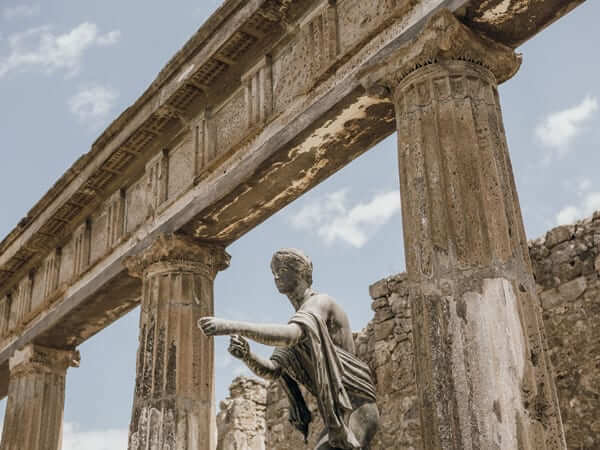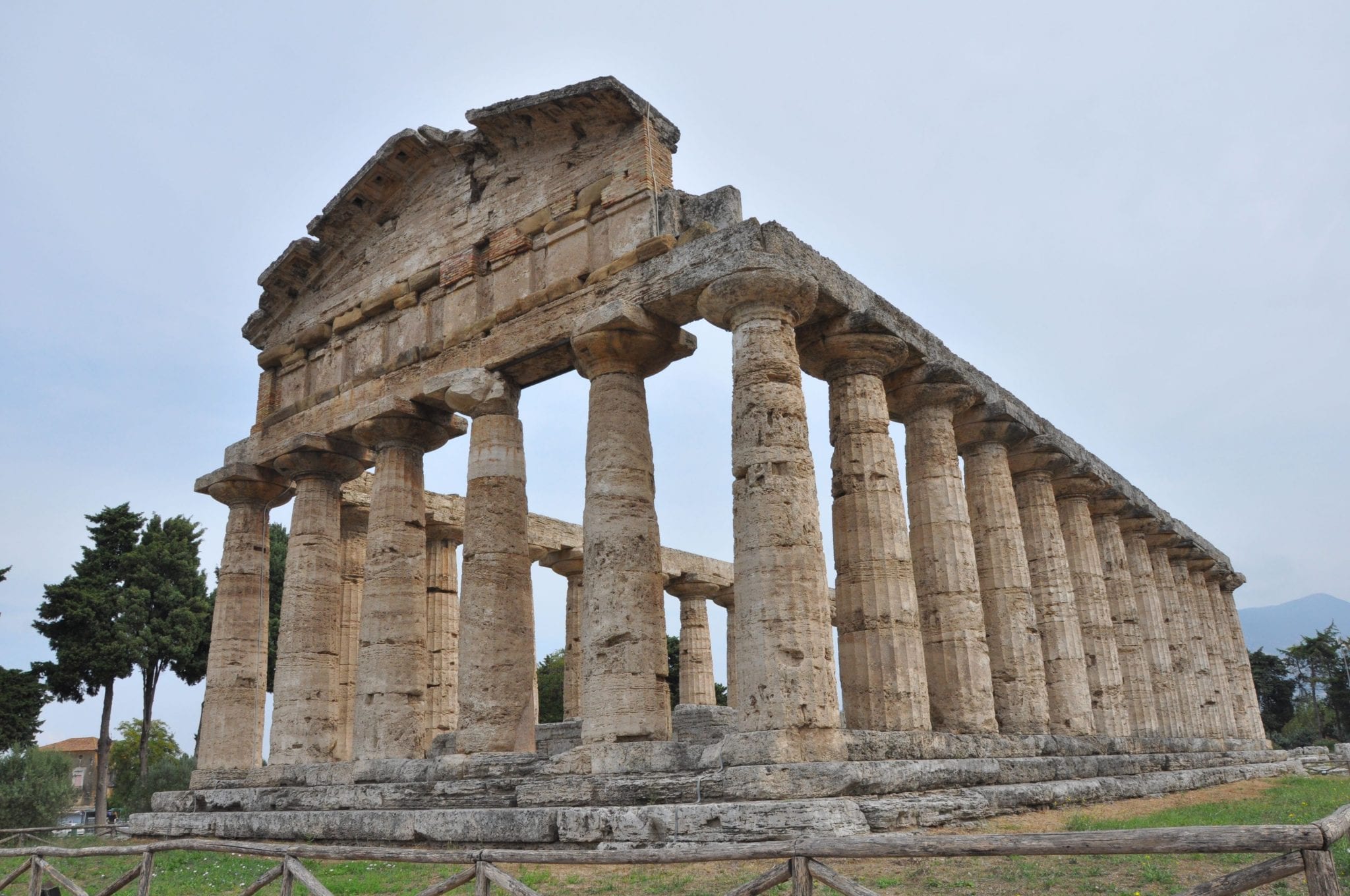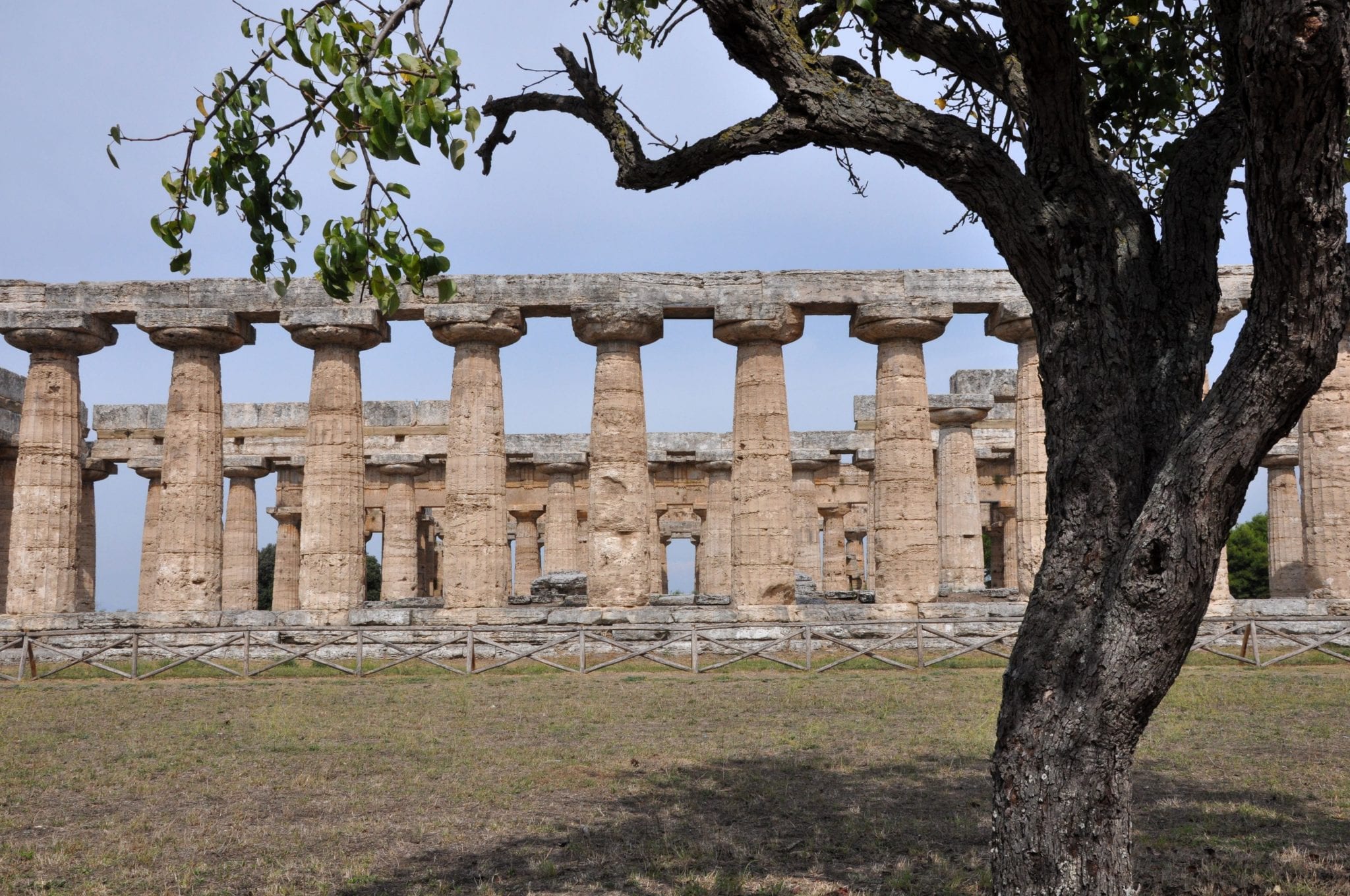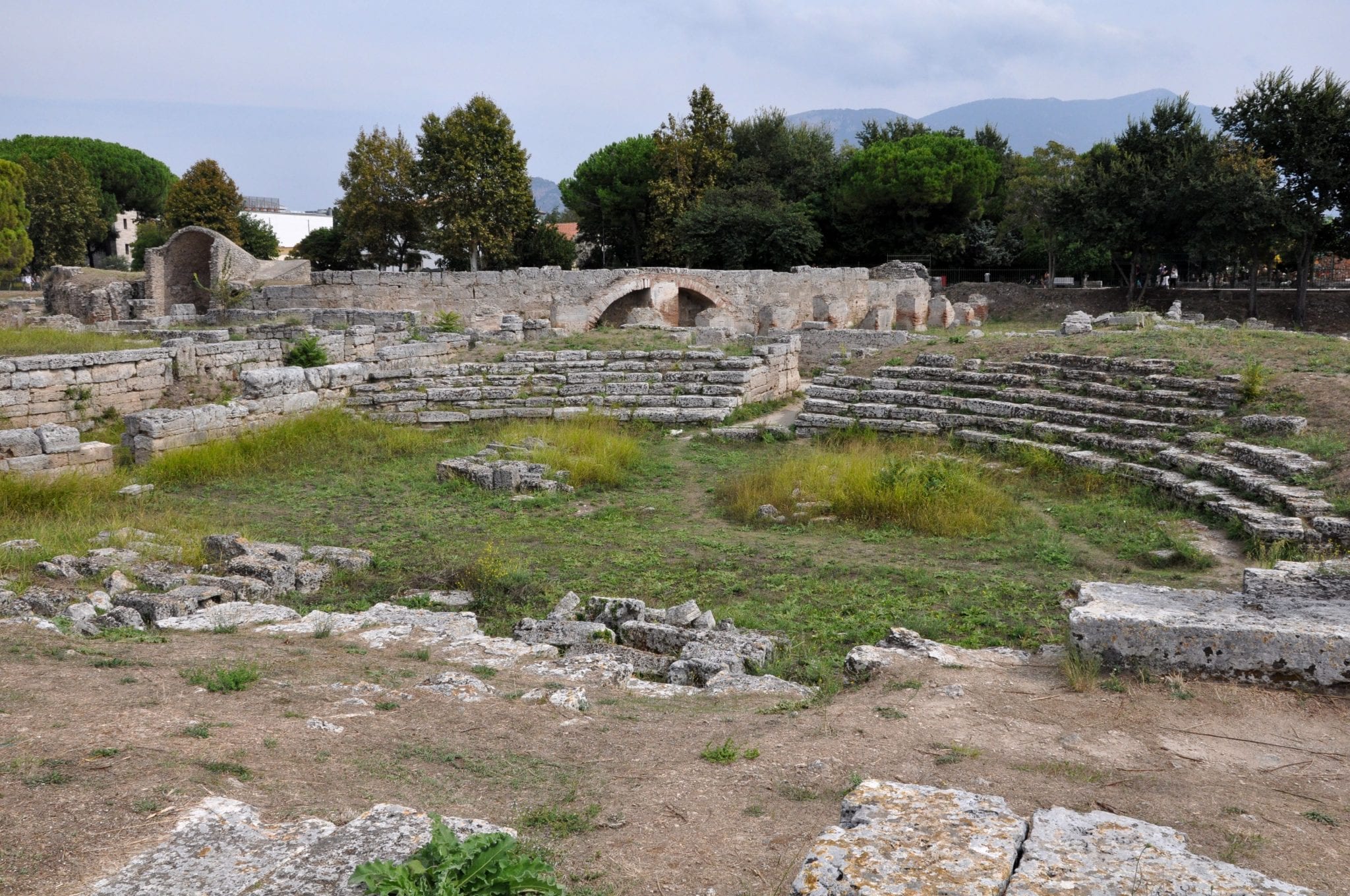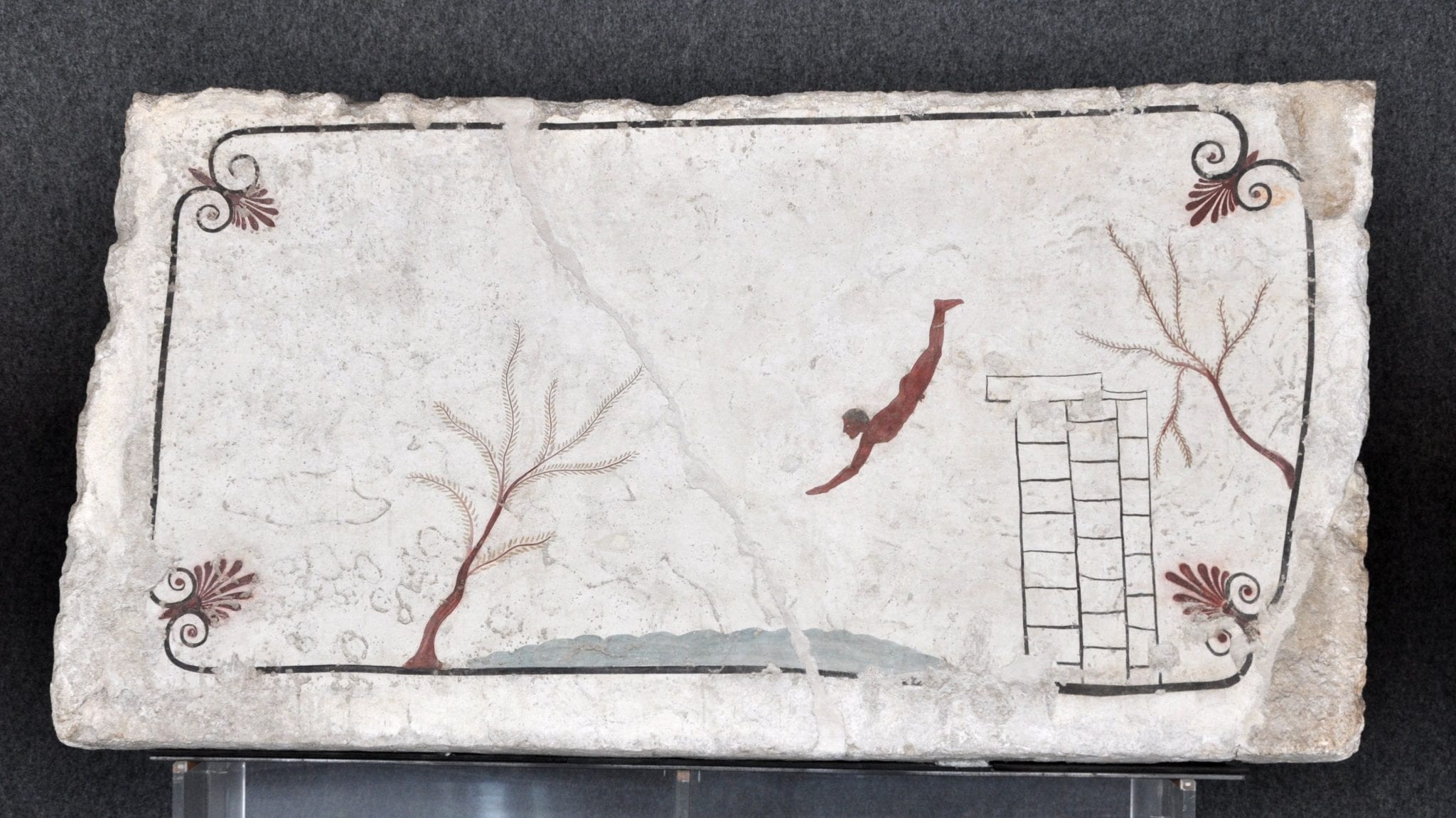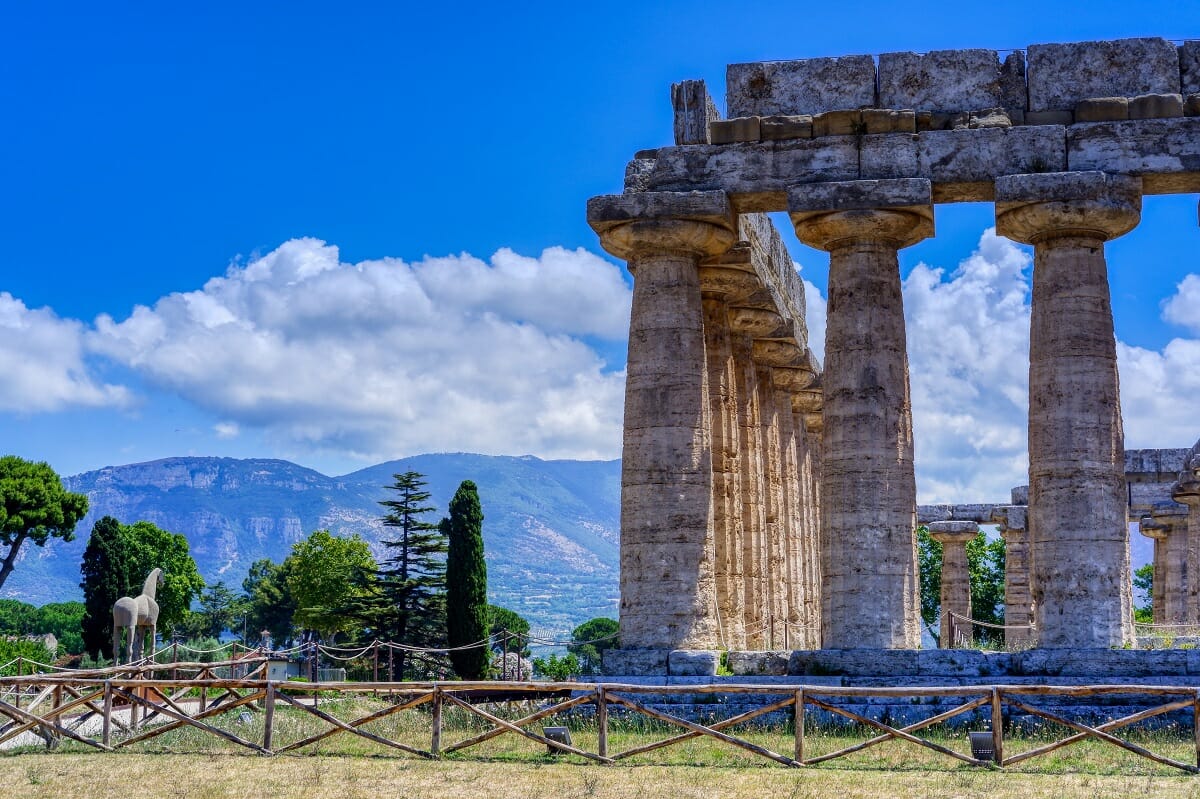
Paestum: The Best Ancient Greek Ruins in Italy’s Mainland
October 29, 2025
Most of the ancient ruins in Italy you see are, not surprisingly, Roman. But just an hour south of Salerno is something different… and much older: Greek ruins. And the ancient ruins of Paestum are a sight to behold!
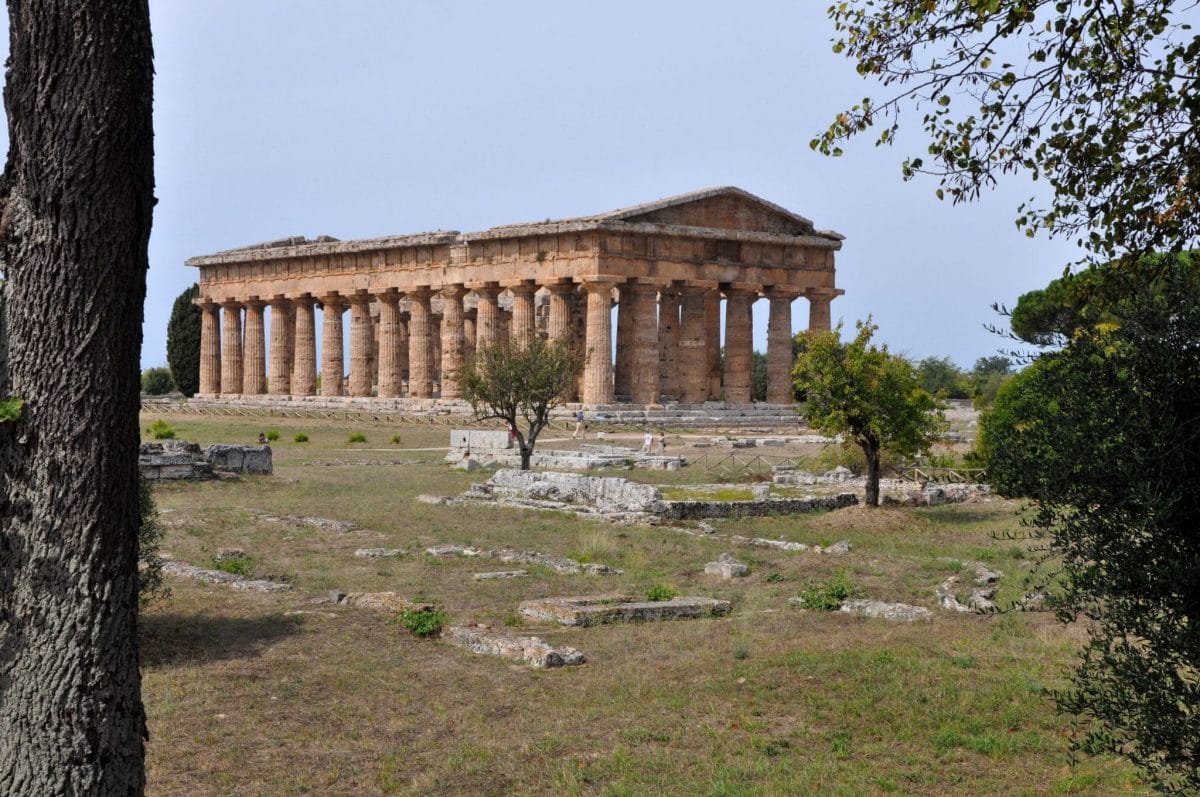
Table of Contents
ToggleThe ancient ruins at Paestum
The ancient ruins at Paestum are among the only Greek ruins left on Italy’s mainland, and they’re definitely the best-preserved. Many more wonderful remnants of ancient Greece can be found on the island of Sicily. But for the mainland, these are your best bet!
In addition, although you’re probably used to hearing all about men and male deities when it comes to the ancients, this site is a nice example of how that wasn’t exactly the case: All three of Paestum’s major temples were built in honor of female goddesses.
The site also has a gem of an archaeological museum, with some of the most important finds of the Greek and Etruscan civilizations. Another bonus? Although Paestum is, of course, a tourist site, it’s well off the beaten track—meaning that, depending on the season, you might be almost alone with the temples.
Founded in 600 B.C. by the Greeks, Paestum was conquered by the Romans in 273 B.C. While you can still see the archaeological signs of their conquest today, the best-preserved, and most spectacular, ruins in Paestum remain Greek.
The Temple of Hera I
The Temple of Hera I was the first temple of the three, as well as the first one dedicated to Hera. (We know that because, again, of the votive offerings. Most are female terracotta statues with the Greek letters Η (eta) + P (rho) + A (alpha): Hera). Even here, though, there’s been confusion: Earlier archaeologists thought it was a Roman public building, so dubbed it the “Basilica” of Hera. While smaller than the other one, it’s still huge. Its date? 550 B.C.
The Temple of Hera II / Neptune

Paestum’s Temple of Hera II is one of the best-preserved (and most beautiful!) ancient Greek temples in Italy. Photo credit: Antonio Sessa
The middle of the three temples, the Temple of Hera II, is the one that awes the most. Your guidebook probably calls it the Temple of Neptune; archaeologists now know that it was dedicated to Hera, the goddess of women and marriage, thanks to worshippers’ votive offerings found buried in pits close to the temple.
Dating all the way back to 450 B.C., the temple is completely intact, except for some of the inner walls and the roof. It’s in such good shape, in fact, it’s one of the best-preserved ancient Greek temples in the entire world! It’s also absolutely massive: 195 by 80 feet.
The Temple of Athena
Then there’s the Temple of Athena. A small, lovely temple that’s also been (mistakenly) attributed to Ceres, it was dedicated to the goddess of war, wisdom, and heroism. Dating back to 500 B.C., it was later used as a Christian church.
The Ampitheater
Once you’ve taken in these stunning temples and their surrounding ruins (don’t miss the Roman amphitheater, of which you can only see half thanks to an insensitive decision in 1930 to bury its northern half with a new road), head to the site’s Archaeological Museum.
Paestum tomb paintings
While you’re there, don’t miss the incredibly well-preserved ancient tomb paintings, all found by accident in 1969 by an artichoke farmer (!). The most famous of them all are the frescoes from the Tomb of the Diver. Although they look like they were painted yesterday, they were painted back in 470 B.C. Some pictures show men frolicking at a funerary banquet. The most famous, though, shows one solitary figure leaping into the water, an image that’s been interpreted as a stunning metaphor for death—and the only image like it ever found.
FAQ´s – The ancient ruins at Paestum
What are the opening hours and admission prices?
The parks are open daily from 8:30 am to 7:30 pm, with last admission at 6:30 pm.
On the 1st & 3rd Monday, the museum is open only until 1:40 pm, with last entry at 1:00 pm
The combined fee for the archaeological park and museum is €15 from March to November. In winter (December–February) the full ticket is €10.
How do we get to Paestum?
You don’t need more than a day in Paestum, so you can make an easy day trip from either the Amalfi Coast’s Salerno (one of the reasons why we’ve recommended using Salerno as a base before) or Naples.
To reach Paestum, you can use either Paestum station or Capaccio-Roccadaspide (formerly Capaccio Scalo) depending on your route.
From Salerno, trains to Paestum take about 25–30 minutes with several direct regional services daily. You can also take buses from Salerno via operators like CSTP or SITA / Autolinee Giuliano, though these are slower and schedules may be less frequent.
From Naples, you’ll usually travel by regional train or a combination of train + bus, which can take about 1 to 1.5 hours depending on connection and route.
From Capaccio Scalo / Capaccio-Roccadaspide, there are very short train and bus connections to Paestum — the local train takes around 3 minutes and buses may take about 5 minutes, depending on timing.

What’s the best time of year to visit Paestum?
Spring (April–June) and autumn (September–October) are ideal times to visit Paestum. The weather is warm but not stifling, wildflowers bloom across the archaeological park, and the crowds are smaller than in high summer. Visiting in the late afternoon gives you the added bonus of golden sunlight illuminating the temples, perfect for photography.
Are there other attractions near Paestum worth visiting?
Yes — Paestum lies in the Cilento region, a UNESCO-listed area rich in natural and cultural treasures. If you want to spend more time in this area to explore, you can visit the nearby buffalo mozzarella farms of Capaccio, explore the Cilento and Vallo di Diano National Park, or relax on the beaches of Agropoli. For history lovers, the Velia archaeological site—another ancient Greek settlement—is just an hour away.

After a day spent wandering among Paestum’s awe-inspiring temples and ancient tombs, there’s no better way to complete your journey through history than by indulging in the flavors of Naples — the birthplace of Italian street food and bold southern cuisine.
✨ Discover Italy with Walks of Italy — from iconic landmarks to hidden gems, our expert-led tours bring every corner of the country to life. Explore all our tours here!
by Walks of Italy
View more by Walks ›Book a Tour

Pristine Sistine - The Chapel at its Best
€89
1794 reviews
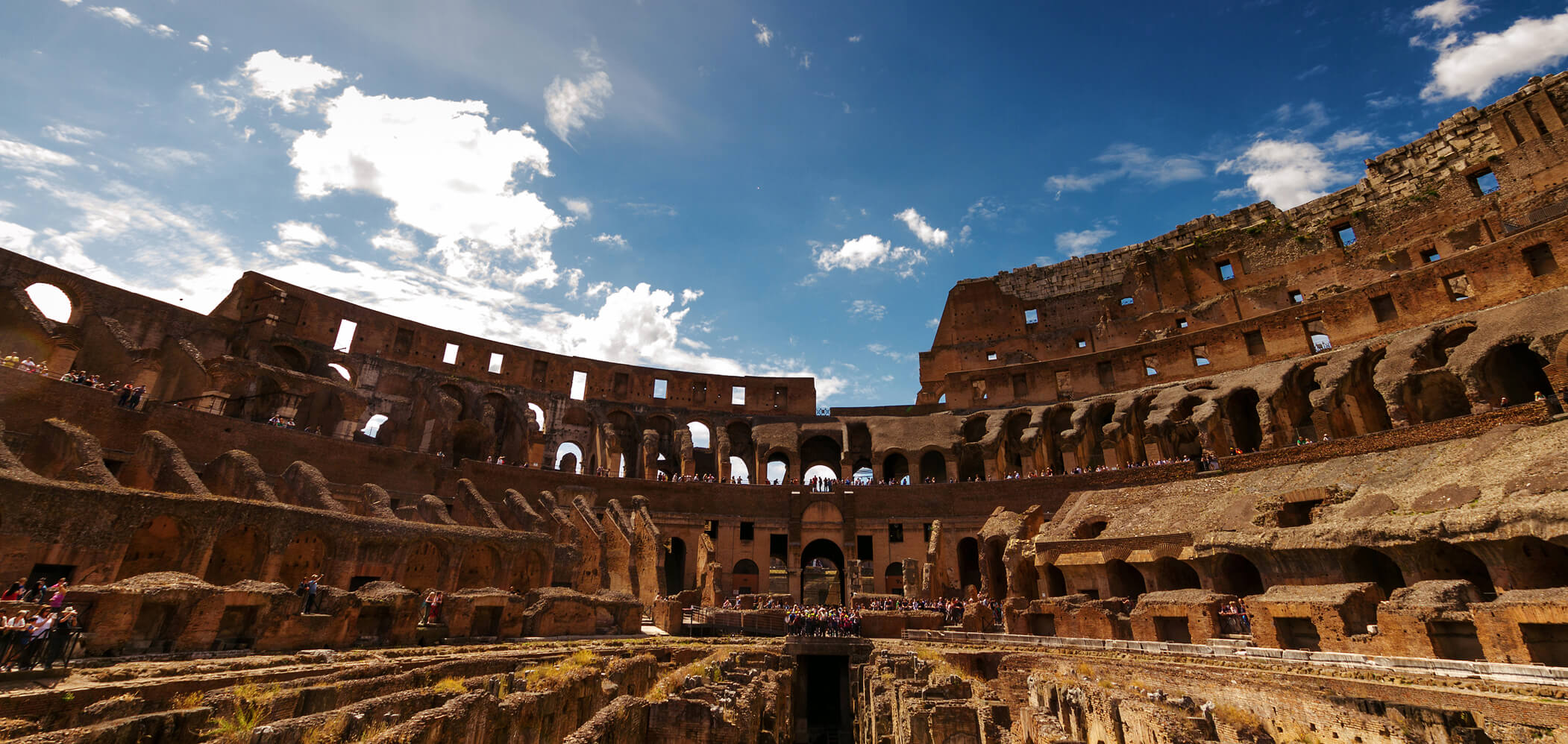
Premium Colosseum Tour with Roman Forum Palatine Hill
€56
850 reviews

Pasta-Making Class: Cook, Dine Drink Wine with a Local Chef
€64
121 reviews

Crypts, Bones Catacombs: Underground Tour of Rome
€69
401 reviews
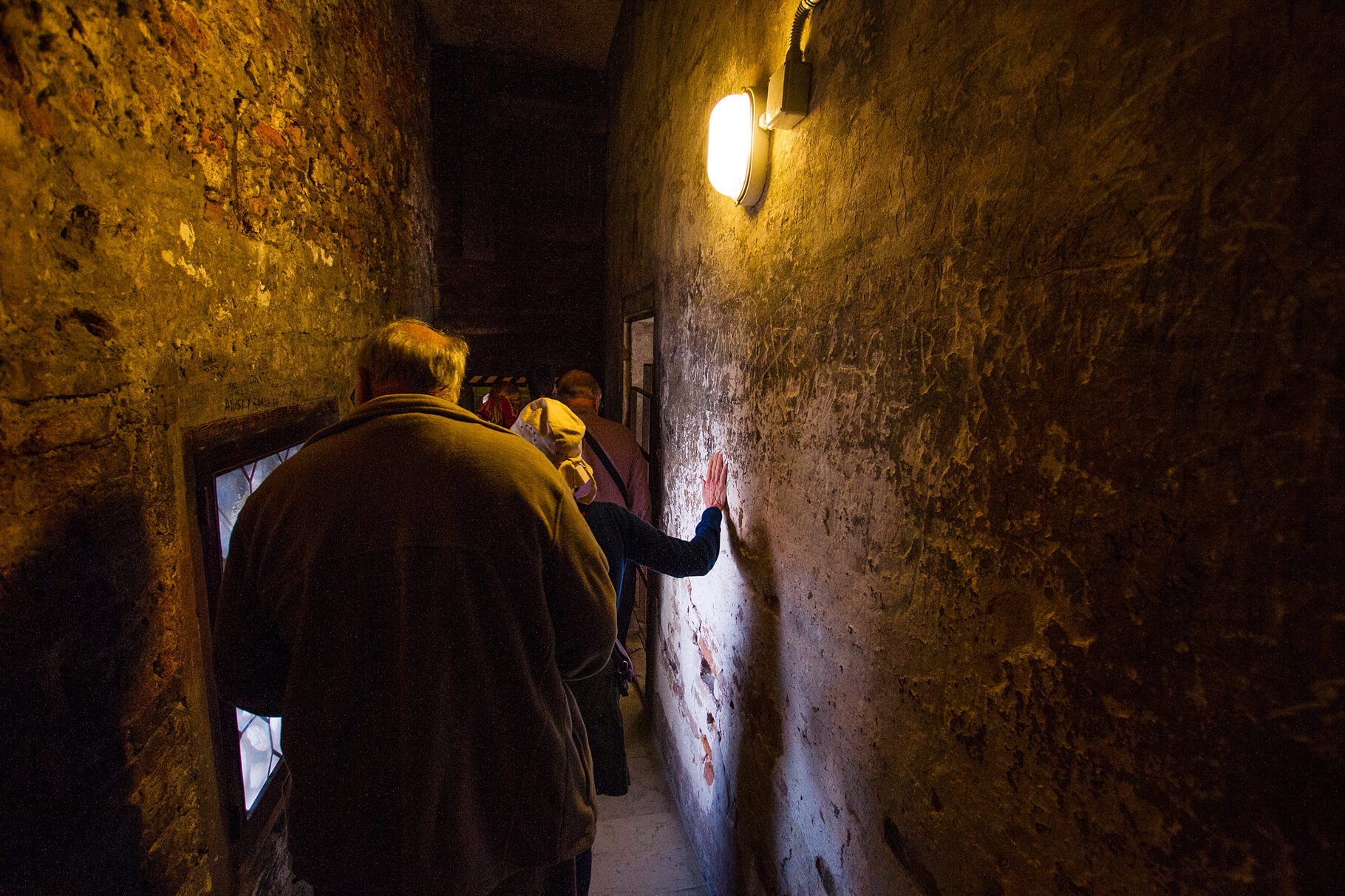
VIP Doge's Palace Secret Passages Tour
€79
18 reviews
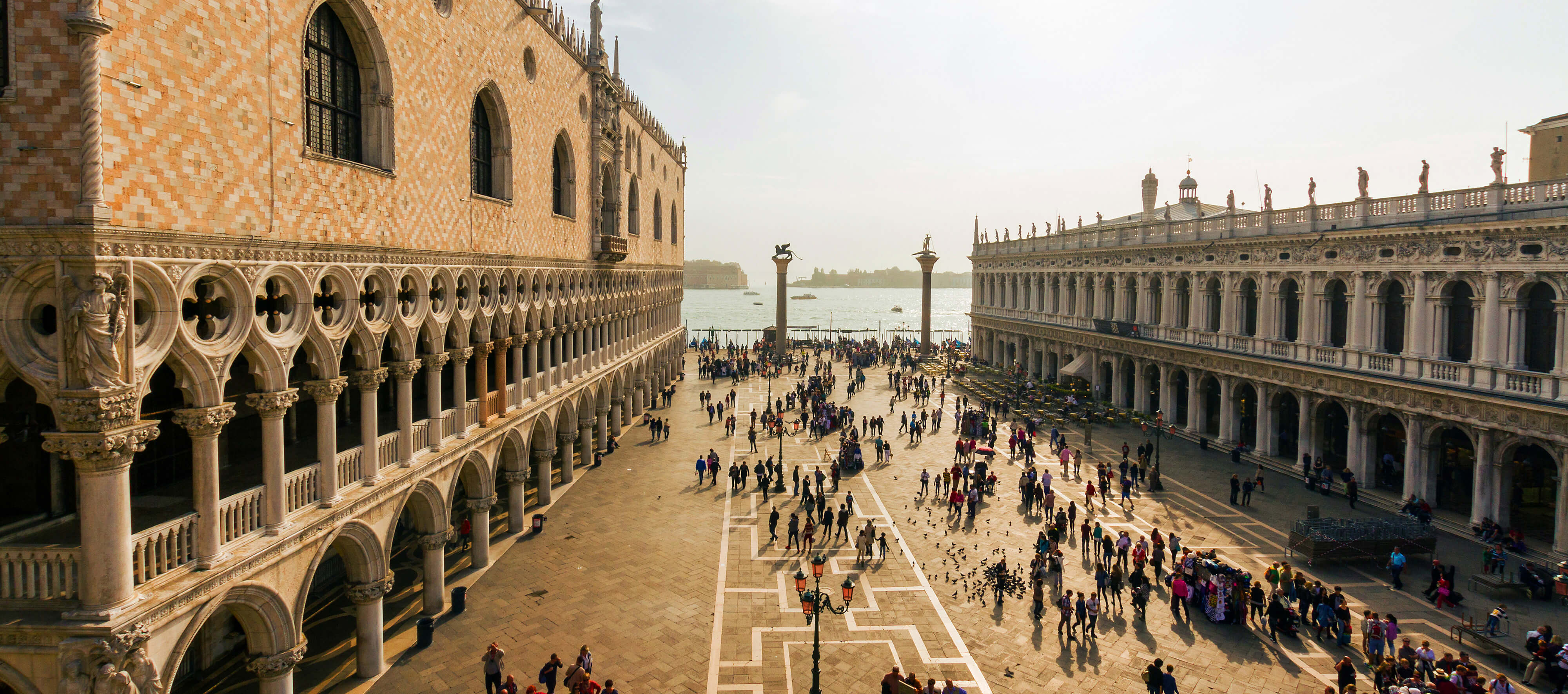
Legendary Venice: St. Mark's Basilica, Terrace Doge's Palace
€69
286 reviews




